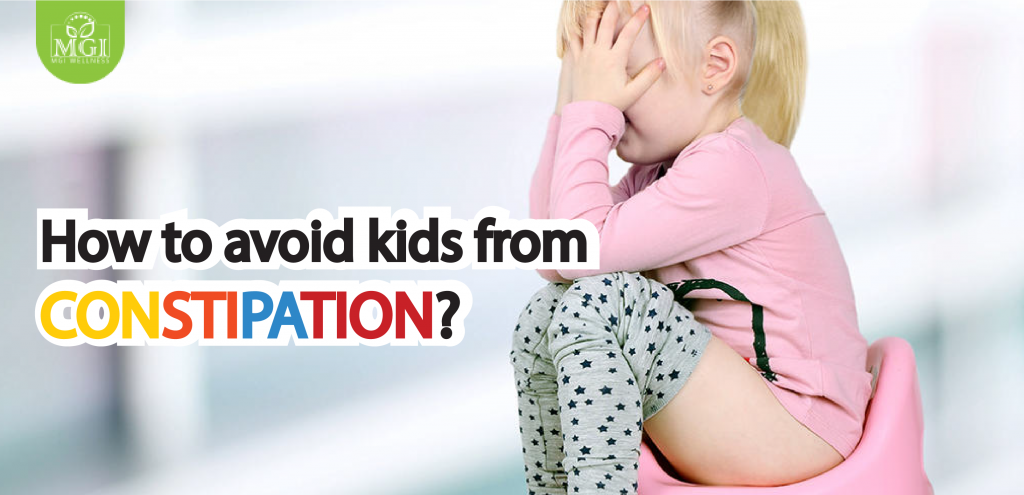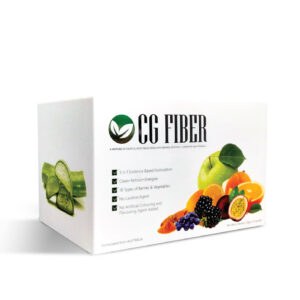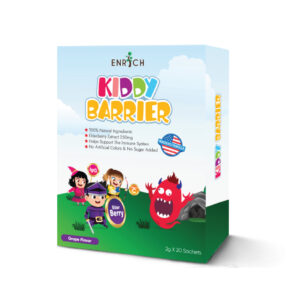Wellness
How to avoid kids from constipation?
Is Your Child Constipated?
Your child is crying again! He/ She tell you that it is painful to “poo poo” and you are at a loss of what to do. It makes your heart aches. Thinking should you rub his stomach, gives him/her more water or ask him/her to continue trying to push it out?
Does this sound familiar to you? Very often, a mother’s world revolves around her child’s bowel movement by worrying is my child pooping regularly? Why does it cause him/ her so much pain? Why is the poop so hard?
Most importantly, what can I do to prevent it from happening again and again?
Constipation: A Painful Toilet Time
Constipation is a common problem in children and it may seem like a typical health problem. Generally, constipation is understood to involve infrequent, difficult, painful or incomplete release of hardened stools.
Nevertheless, bowel patterns might vary from child to child just as they do in adults. Most children have bowel movements 1 or 2 times a day while other children may go 2 to 3 days or longer before passing a normal stool. For example, if your child is healthy and has normal stools without discomfort or pain, having a bowel movement every 3 days may be a normal bowel pattern.
How Do I Know My Child Is Constipated?
Every child has different ways of letting you know when they are constipated. Signs include:
- Passing very hard or dry stools
- Difficulty or straining when passing stools
- Pain when passing stools, sometimes with a tiny amount of blood on the toilet paper, due to a small tear in the skin of the back passage (anus) (1)
- Blood on the surface of hard stool
- Stomach aches
- Bloating / Gassiness
- Loss of Appetite
- Behavioral changes, such as being more cranky or unhappy
- Changes in bowel movements frequency (decreases compared to normal pattern)
What Causes Constipation In Children?
- Diet
Your child may not be consuming enough or dislike fiber from fruits, vegetables or whole grains. Besides, he/she may not be drinking enough water that might cause stools to harden
- Withholding
Your child may ignore the urge to have a bowel movement because he/she simply doesn’t want to take a break from play. Painful bowel movements caused by hard stools also may lead to withholding. If it hurts to poop, your child may try to avoid a repeat of the distressing experience. Meanwhile, some children withhold when they are away from home because they are uncomfortable using public toilets.
- Changes in routine/ environment
Any changes in your child’s routine such as travel, hot weather or stressful situation may affect his/her overall health and how his/her bowels function. Children are also more likely to experience constipation when they first start school outside of the home. (2)
- Cow’s milk allergy
An allergy to cow’s milk or consuming too many dairy products like cheese sometimes leads to constipation.
- Illness
If your child is sick and loses his/her appetite, a change in his diet can throw off his/her system and cause him/her to be constipated.
What Can I Do To Ease My Child’s Constipation?
There is no quick-fix for constipation but like any other condition, prevention is better than cure. Here are some useful tips to manage and prevent constipation in your child:
- Introduce fiber in his/her diet
A balanced diet that includes whole grains, fruits and vegetables is recommended for the management of constipation among children. Based on the Malaysian Dietary Guidelines for Children and Adolescents, children from 3 to 6 years old should consume 2 servings of vegetables and 2 servings of fruits daily. (3)
Parents can do so by introducing foods that are high in fiber and taste sweet in natural. Picky eaters or children who dislike eating vegetables may be more agreeable with sweeter foods such as carrots, corn and sweet potatoes which are high in fiber. To encourage your child to eat, try to present the vegetables in a fun way. For instance, cut carrots into different shapes like “flowers” and make a smiley face with mashed potatoes, cherry tomatoes or cucumber.
Provide fruity snacks to ensure your child eats sufficient fruits on a daily basis. For example, you can pack a variety of fruits into zip lock bags and label them with cute characters or name such as label a banana with a ‘Banana in Pyjamas ’ sticker on the bag. You can also prepare and give these to the nanny or day-care center, so that they can give it to your child as healthy snacks.
- Increase fluid intake
Based on the Malaysian Dietary Guidelines for Children and Adolescents, children between 2 to 3 years old should drink 1 to 2 glasses of plain water a day while children above 4 years should consume 6 to 8 glasses per day.(3) That note that this should be practiced daily and not only when constipation is suspected. You can get them a cute bottle, sippy cup and fun straws to encourage kids to drink more water.
- Encourage / plan regular toilet times
Train your child and encourage him/her to use the toilet at regular periods, such as after meals, before and after his favorite cartoon program. If your child is already suffering from constipation, introduce a routine scheduled toilet sitting for 3 to 10 minutes, once or twice a day. Use a footstool to support his/her legs to effectively increase intra-abdominal pressure. Do not punish him/her for not passing motion during this time, but praise and reward him/her if he/she does.
- Regular physical activity
Any kind of physical activity helps keep the bowels moving, so it is important to find activities your child enjoys. Get your child to play sports or exercise at least 30 to 60 minutes a day. It can be as simple as playing catch, riding bikes, or shooting a few hoops.
- Eating food that could promote growth of beneficial bacteria in the gut
Prebiotics help to support good bacteria in the gut, which in turn helps to maintain a good intestinal environment so your child experiences fewer digestive discomforts such as constipation. Prebiotics, mostly oligosaccharides are food for the beneficial bacteria to grow and multiply. (4) They could be found in foods that cannot be normally digested by the digestive system such as bananas, berries, apples, oatmeal and onions. Prebiotics can increase bacterial mass and water content of the stool content in the colon. These actions increase stool mass and softening the stool to reduce the risk of constipation.
In addition, research has shown that consuming probiotics such as fructooligosaccharides (FOS) and galactooligosaccharides (GOS) helps increase the beneficial bacteria in the gut, help promote softer stools for easier bowel movement. (5) Probiotics are live bacteria that are good for you, especially your digestive system. They can be found in yogurt, cheese, miso and tempeh.
As parents, now that you understand constipation a little better, you can now take steps to help manage and also prevent it from happening to your child. Remember that even small changes can bring big results with time. Thus, it is important to ensure your child is eating, drinking and resting well for better gut health.
References:
- A Rowan-Legg; Managing functional constipation in Children. Canadian Paediatric Society Community
Paediatrics Committee, Paediatr Child Health 2011;16(10):661-5
- North American Society for Pediatric Gastroenterology, Hepatology and Nutrition. Evaluation and treatment of
constipation in children: Summary of updated recommendations of the North American Society for Pediatric
Gastroenterology, Hepatology and Nutrition. J Pediatr Gastroenterol Nutr 2006;43:405-7
- Malaysian Dietary Guidelines for Children and Adolescents 2013
- Binns N. International Life Sciences Institute (ILSI) Europe: Concise Monograph Series. Probiotics, prebioitcs
and the gut microbiota
- Bischoff. ‘Gut Health’: a new objective in medicine?BMC Medicine.9:24 (2011)
Health Food
Health Food




Thanks-a-mundo for the post.Really thank you!